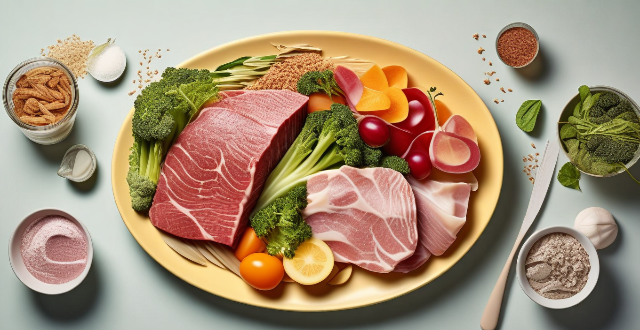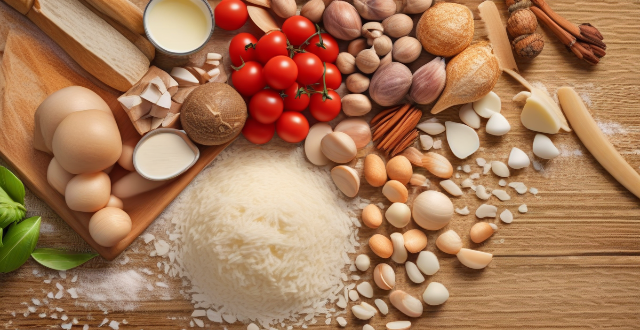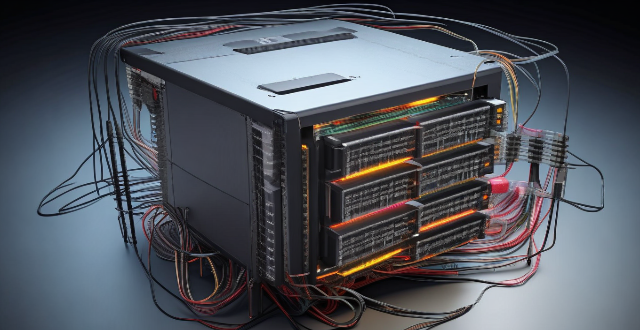Japanese High

What are some healthy options for Japanese breakfast ?
Japanese breakfast offers a variety of healthy options that provide essential nutrients and flavors. Miso soup is rich in protein and probiotics, aiding digestion and immunity. Tamagoyaki offers high-quality protein in a low-calorie package. Natto is fermented soybeans with vitamins, minerals, and probiotics for gut health. Onigiri are portable rice balls filled with various ingredients for carbohydrates and protein. Grilled fish provides omega-3 fatty acids for heart and brain health. Japanese pickles are low-calorie, fiber-rich vegetables aiding digestion. Yudofu is boiled tofu high in protein and calcium, suitable for vegans or those watching their weight. Okara, the soy milk residue, is high in fiber and protein, promoting fullness and digestive health. Incorporating these dishes into your breakfast routine can offer a balanced and nutritious start to the day while enjoying Japanese flavors.

Can you explain the concept of umami in Japanese cooking ?
Umami is one of the five basic tastes, along with sweet, sour, salty, and bitter. It is often described as a savory or meaty taste, and is commonly found in foods such as mushrooms, soy sauce, and aged cheeses. In Japanese cooking, umami is considered an essential flavor profile that adds depth and complexity to dishes. The science of umami is caused by the presence of glutamate, a type of amino acid, in food. When we eat foods that contain glutamate, it stimulates our taste buds and sends signals to our brain that register as a distinct taste. This taste is often associated with protein-rich foods like meat, fish, and vegetables. In Japanese cuisine, umami is used to enhance the flavors of dishes and create a more complex taste profile. Some common ingredients that are high in umami include miso (fermented soybean paste), dashi (Japanese broth made from dried fish and seaweed), soy sauce, dried shiitake mushrooms, and kombu (a type of seaweed). Umami is used in a variety of ways in Japanese cooking. For example, miso soup is made by mixing miso paste with dashi broth to create a savory soup that is often served as part of a traditional Japanese breakfast. Sushi combines vinegared rice, fresh fish, and soy sauce to create a perfect balance of flavors that includes umami. Ramen noodles use a broth made with chicken or pork bones, which are rich in umami. Teppanyaki involves grilling meat and vegetables on a hot plate, which helps to release their natural umami flavors. In conclusion, umami is an important flavor profile in Japanese cooking that adds depth and complexity to dishes. By using ingredients that are high in glutamate, chefs can create dishes that are both delicious and satisfying.

What kind of ingredients are commonly used in Japanese cuisine ?
Japanese cuisine is known for its unique flavors, fresh ingredients, and beautiful presentation. The most commonly used ingredients in Japanese cooking include white rice, brown rice, sweet rice, tuna, salmon, squid, shellfish, chicken, beef, pork, cabbage, eggplant, green onions, mushrooms, soy sauce, miso, udon noodles, soba noodles, ramen noodles, rice vinegar, sesame oil, nori, wasabi, and pickled ginger. These ingredients combine to create the diverse and delicious flavors that make Japanese cuisine so beloved around the world.

Can you recommend a good Japanese restaurant in my area ?
The text provides recommendations for finding a good Japanese restaurant in one's area. It suggests checking online reviews, asking locals for recommendations, looking for specialties, and considering the ambiance. The steps to follow include searching online, making a list of potential restaurants, narrowing down options, calling ahead, and trying them out. The author encourages readers to enjoy their culinary adventure and discover personal favorites.

What are some popular Japanese dishes ?
Japanese cuisine is known for its exquisite flavors, meticulous preparation, and beautiful presentation. Some popular dishes include sushi, ramen, tempura, udon, and okonomiyaki. Sushi comes in various forms such as nigiri, sashimi, and maki. Ramen is a noodle soup with different broths and toppings. Tempura is a fried dish with a light batter. Udon is thick noodles served hot or cold with various toppings. Okonomiyaki is a savory pancake with diverse ingredients. Each region in Japan has its own specialties and unique flavors to explore.

What is the difference between ramen and udon noodles ?
Ramen and udon are two popular Japanese noodle dishes with unique flavors, textures, and cultural significance. Ramen is made from wheat flour, water, salt, and kansui, resulting in elastic and chewy noodles. It is typically served in a meat-based broth flavored with soy sauce, miso, or seafood, and topped with pork, menma, scallions, nori, and a soft-boiled egg. Udon, on the other hand, is made primarily from wheat flour and water, producing thicker and smoother noodles. Its broth is usually clear and light, made from kombu and shiitake mushrooms, and often served hot or cold with simple toppings like tempura, green onions, or grated ginger. Ramen originated in China but became popular in Japan during the early 20th century, evolving into a staple of Japanese cuisine. It has numerous regional variations across Japan, such as Sapporo's miso ramen, Hakata's tonkotsu ramen, and Tokyo's soy sauce-based ramen. Ramen shops can be found everywhere in Japan, from high-end establishments to quick street food stalls, reflecting its deep integration into daily life. Udon has been part of Japanese cuisine for centuries and is traditionally associated with Sanuki (now Kagawa Prefecture), known as the "Udon Kingdom." While udon is typically served in a simple broth or chilled with a dipping sauce, there are also hot pot variations like nabe and kitsune (fox) udon. Udon is often considered comfort food in Japan and is frequently consumed during cold weather or as a quick meal due to its ease of preparation. In conclusion, ramen and udon offer distinct experiences for those who enjoy them. Ramen provides a hearty and filling meal with complex broths and diverse toppings, while udon offers a cleaner taste with simpler broths and toppings, focusing on the pure enjoyment of the noodle itself. Both have their place in Japanese cuisine and continue to captivate noodle enthusiasts around the world.

How do I make a Japanese-style bento box ?
Bento boxes are a traditional Japanese meal that is packed in a box and typically consists of rice, fish or meat, and vegetables. Here's how you can make your own Japanese-style bento box: Ingredients: - 1 cup of cooked white rice - 1/2 pound of thinly sliced beef or chicken - 1 tablespoon of soy sauce - 1 tablespoon of sugar - 1 tablespoon of mirin (Japanese sweet cooking wine) - 1 teaspoon of sesame oil - 1/4 cup of sliced carrots - 1/4 cup of sliced bell peppers - 1/4 cup of sliced cucumbers - 1/4 cup of sliced cherry tomatoes - 1 sheet of nori (dried seaweed) - Salt and pepper to taste Instructions: 1. Marinate the Meat: In a bowl, mix together the soy sauce, sugar, mirin, and sesame oil. Add the sliced beef or chicken and let it marinate for at least 30 minutes. 2. Cook the Rice: Cook the rice according to package instructions until it is soft and fluffy. Set aside to cool slightly. 3. Prepare the Vegetables: Slice the carrots, bell peppers, cucumbers, and cherry tomatoes into thin strips. Season them with salt and pepper. 4. Cook the Meat: Heat a pan over medium heat and cook the marinated meat until it is browned and cooked through. Set aside to cool. 5. Assemble the Bento Box: Take a bento box and fill one compartment with the cooked rice. Arrange the cooked meat and vegetables in separate compartments or on top of the rice. Cut the nori into small pieces and sprinkle them over the rice and vegetables. 6. Enjoy Your Bento Box: Your Japanese-style bento box is now ready to be enjoyed! Eat it as a delicious and healthy meal or pack it for a picnic or lunch on-the-go.

How do I use chopsticks properly when eating Japanese food ?
Using chopsticks is an art form in Japan, and there are certain etiquette rules that you should follow to show respect for the culture. Here's a step-by-step guide on how to use chopsticks properly when eating Japanese food: 1. Holding the Chopsticks: Hold the first chopstick (the one closer to the tip of the food) like a pencil, resting it between your thumb and index finger. This is your stationary chopstick. Place the second chopstick (the one closer to the end of the food) underneath the first chopstick, resting on your ring finger. This is your moving chopstick. 2. Picking Up Food: Use the tips of the chopsticks to scoop up food rather than pincing it with the ends. This is considered more polite and traditional. For larger pieces of food, it's acceptable to use both chopsticks to pick them up. For smaller items, try using just one chopstick if possible. 3. Eating: If you need to dip your food in soy sauce or another sauce, do so lightly and minimally. Overdoing it can be seen as wasteful. Place the food in your mouth from the chopsticks without making any noise. Chew with your mouth closed. 4. Chopstick Etiquette: Avoid playing with your chopsticks, tapping them on the table, or leaving them standing in your food. These actions are considered impolite. Never use your chopsticks to point at people or gesture with them. This is rude and associated with funeral rites in Japan. Do not lay your chopsticks across your plate or bowl as this resembles incense sticks at a funeral. Instead, rest them on the chopstick rest provided or on the edge of your dish. 5. After Eating: It's common to wipe the ends of the chopsticks before and after use with the small towel or oshibori provided. If you're at a restaurant, leave the chopsticks as they are when you finish eating. Do not put them back in their original packaging or wrap them up. By following these guidelines, you'll not only avoid offending anyone but also show that you respect and appreciate Japanese dining culture. Remember, practice makes perfect!

What are the best high-end restaurants in New York City ?
New York City is known for its diverse and vibrant food scene, with countless high-end restaurants offering exceptional dining experiences. Here are some of the best high-end restaurants in NYC: 1. Eleven Madison Park - a three-Michelin-starred restaurant located in the heart of Manhattan, offering a seasonal menu that showcases locally sourced ingredients and innovative dishes. 2. Le Bernardin - another three-Michelin-starred restaurant known for its exquisite seafood dishes, serving seafood simply prepared to let the natural flavors shine through. 3. Per Se - a Michelin three-starred restaurant located inside the iconic Time Warner Center, offering a nine-course tasting menu that changes daily based on seasonal ingredients. 4. Jean-Georges - a Michelin three-starred restaurant located in the Trump International Hotel & Tower, offering contemporary French cuisine with a focus on local and seasonal ingredients. 5. Masa - an upscale Japanese restaurant located in the Time Warner Center, offering a multi-course tasting menu featuring traditional Japanese dishes made with the finest ingredients. 6. Chef's Table at Brooklyn Fare - a Michelin three-starred restaurant located in Brooklyn, offering a unique dining experience where guests sit around an open kitchen and watch the chefs prepare their meals. 7. Gramercy Tavern - a Michelin two-starred restaurant located in the Flatiron District, offering contemporary American cuisine with a focus on seasonal ingredients. 8. Blue Hill at Stone Barns - a Michelin three-starred restaurant located in Pocantico Hills, offering a unique dining experience where guests can enjoy their meals while surrounded by beautiful gardens and farmland, featuring locally sourced ingredients and innovative dishes.

Is it worth investing in a high-tech home security system ?
High-tech home security systems offer enhanced protection and peace of mind but come with drawbacks like high cost and dependence on technology. Whether to invest in one depends on individual needs and preferences.

What is considered high network latency ?
High network latency is a delay in data transmission that can negatively affect the performance of applications and services. It is influenced by various factors such as distance, congestion, hardware performance, bandwidth limitations, QoS settings, and interference. The definition of high latency varies depending on the context, but it is generally considered to be any delay that significantly impacts the usability of applications or services. Identifying high network latency can be done using tools like ping tests or traceroute commands. Mitigating high network latency can involve upgrading hardware, increasing bandwidth, optimizing QoS settings, reducing physical distance, and minimizing interference.

What is the difference between cliff diving and high diving ?
The article discusses the differences between cliff diving and high diving, two sports involving athletes jumping from heights into water. The differences are explored in terms of equipment, techniques, safety measures, and competitive formats. Cliff diving takes place on natural or artificial platforms overlooking bodies of water, with heights ranging from 20 to 27 meters. High diving, on the other hand, occurs on elevated platforms built specifically for competitions, with standardized heights of 10 meters for men and 5 meters for women. Cliff divers must navigate uneven terrain and deal with varying wind conditions, while high divers have a clear path to the edge of the platform. Cliff diving often involves complex rotations and somersaults, while high diving focuses on precision and execution. Safety measures for cliff diving include sufficient water depth, clean water quality, and emergency procedures, while high diving requires regulation-sized pools with adequate depth and space, regular maintenance, and supervision by lifeguards and medical personnel. Competitive formats for cliff diving include individual competitions and team relays, while high diving features individual, synchronised, and team events at various levels such as national, continental, and world championships.

How have traditional sports uniforms been reimagined in high fashion ?
Traditional sports uniforms have been reimagined in high fashion by incorporating modern design elements, innovative materials, and unique color schemes. This transformation has resulted in a fusion of functionality and style that appeals to both athletes and fashion enthusiasts alike. Here are some ways traditional sports uniforms have been reinvented: 1. Incorporating Modern Design Elements: High fashion designers have incorporated modern design elements into traditional sports uniforms, such as asymmetrical cuts, bold patterns, and intricate detailing. These elements add a touch of sophistication and visual interest to the garments while still maintaining their functionality on the field or court. 2. Using Innovative Materials: In recent years, there has been a focus on using innovative materials in sportswear design. These materials can provide enhanced performance benefits, such as moisture-wicking capabilities, breathability, and stretchiness. High fashion designers have taken advantage of these advancements to create stylish yet functional sports uniforms that meet the demands of today's athletes. 3. Unique Color Schemes: Traditional sports uniforms often feature team colors or simple color combinations. However, high fashion designers have pushed the boundaries with unique color schemes that make a statement on and off the field. Bright neons, pastel hues, and even metallic finishes have become popular choices for modern sports uniforms. 4. Collaborations with High Fashion Brands: Collaborations between sports teams and high fashion brands have also played a role in reimagining traditional sports uniforms. These partnerships allow for the exchange of ideas and expertise between two industries, resulting in unique designs that combine athleticism with fashion-forward aesthetics. 5. Athleisure Wear: The rise of athleisure wear has also influenced the reimagining of traditional sports uniforms. This trend blends athletic apparel with everyday fashion, creating garments that can be worn both during physical activities and casual outings. High fashion designers have embraced this concept by designing sports uniforms that double as stylish streetwear.

What is the physiological basis for the "runner's high" phenomenon ?
The runner's high is a state of euphoria experienced by long-distance runners, believed to have a physiological basis. Endorphins, natural opioid peptides that reduce pain perception and create feelings of pleasure, are key players in this phenomenon. Other factors like adrenaline, norepinephrine, serotonin, dopamine, and cortisol also contribute. The benefits include pain relief, mood enhancement, stress reduction, and improved self-esteem.

What is the function of thermoregulation in high-tech sportswear ?
The text discusses the function of thermoregulation in high-tech sportswear. It explains that thermoregulation is crucial for athletes to maintain their optimal body temperature during physical activities, as overheating or being too cold can affect their performance and increase the risk of injury. High-tech sportswear uses advanced materials and technologies to regulate temperature and manage moisture, including insulation, ventilation, moisture-wicking capabilities, and quick drying. These garments also adapt to different environments through layering systems and seasonal variants. Overall, the function of thermoregulation in high-tech sportswear is essential for athletes to stay comfortable, focused, and efficient during their activities.

How does Wi-Fi 6 perform in high interference environments ?
Wi-Fi 6, the latest wireless networking standard, offers several advantages over its predecessors in high interference environments. Key features include improved spectral efficiency, target wake time, BSS coloring, and spatial reuse. These features result in lower latency, increased throughput, better energy efficiency, and scalability. Wi-Fi 6 is well-suited for handling a large number of connected devices while maintaining low latency and high throughput, making it an ideal choice for high-density network environments like stadiums, airports, and apartment buildings.

What are the best websites for finding high-quality iPhone wallpapers ?
Finding high-quality iPhone wallpapers can be a challenge, but with the right websites, it can be an enjoyable experience. Here are five of the best websites for finding high-quality iPhone wallpapers: Unsplash, Pexels, Walli, Zedge, and InterfaceLIFT. These websites offer free high-resolution photos, curated collections, user-friendly interfaces, and regularly updated content, making it easy to find and download high-quality wallpapers for your iPhone.

How can I avoid injury after a high-intensity workout
To avoid injury after a high-intensity workout, it is important to warm up properly, stretch, use proper form, take breaks, stay hydrated, and wear appropriate clothing. These tips will help reduce the risk of injury and allow you to continue enjoying the benefits of high-intensity workouts.

What are the challenges of implementing home teaching strategies for high school students ?
Implementing home teaching strategies for high school students can be challenging due to lack of resources, time constraints, difficulty in maintaining discipline, limited expertise in subject matter, and difficulty in assessing student performance. However, with careful planning, dedication, and support from educators and other professionals, these challenges can be overcome to provide high-quality education for high school students at home.

Are permanent magnet motors more susceptible to damage from high temperatures compared to other motor types ?
Permanent magnet motors are more susceptible to high temperatures due to demagnetization and thermal expansion issues, compared to induction motors and switched reluctance motors which primarily face insulation degradation and material fatigue respectively.